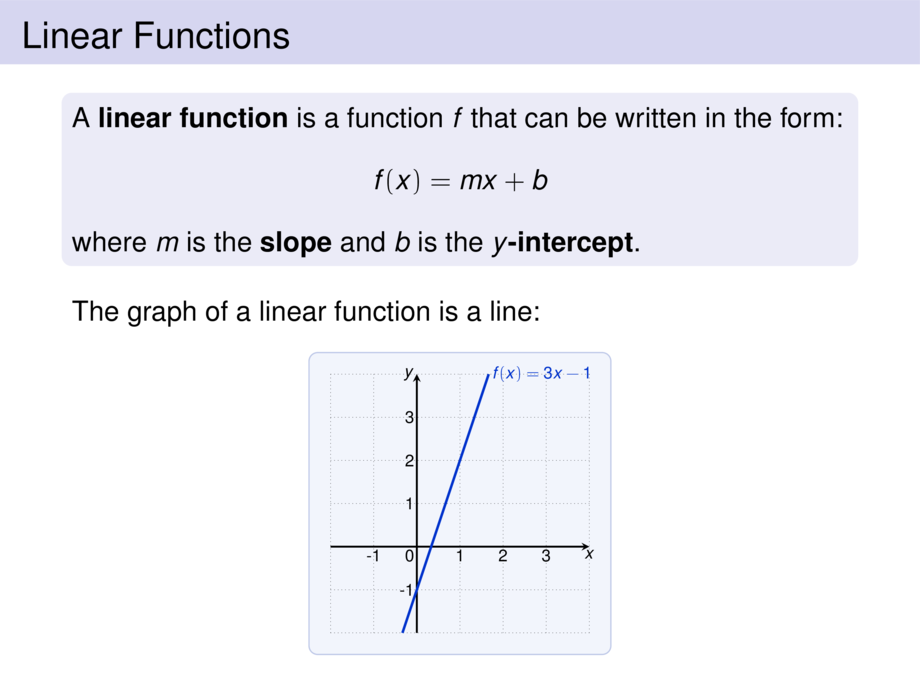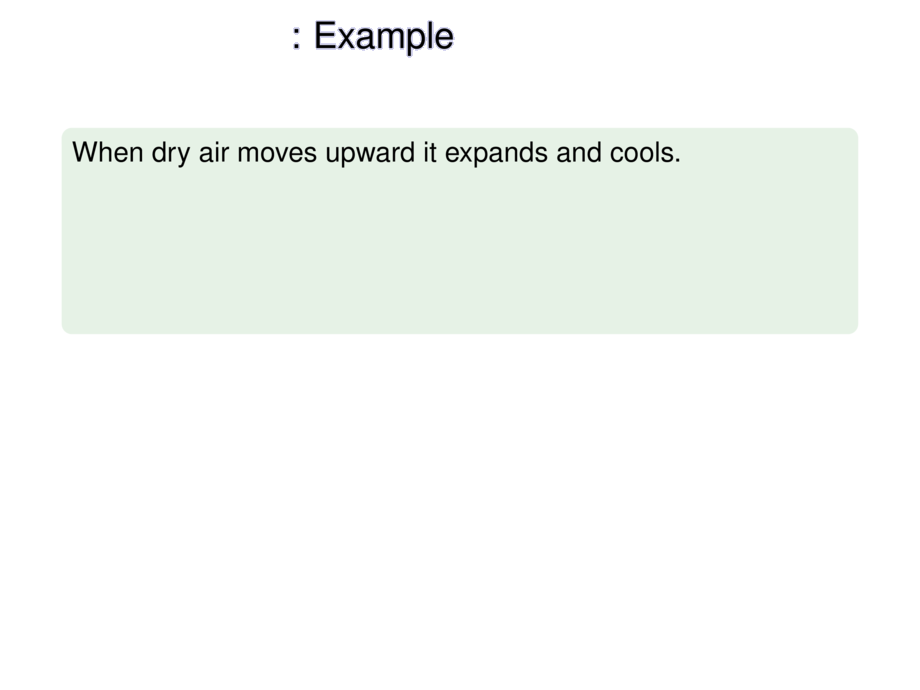



































































































10/353
\begin{frame}
\frametitle{Linear Functions: Example}
\begin{exampleblock}{}
When dry air moves upward it expands and cools.
\begin{itemize}
\pause
\item ground temperature is $20\textdegree$
\pause
\item temperature in height of $1$km is $10\textdegree$
\end{itemize}
\pause
Express the temperature as a linear function of the height $h$.\\
What is the temperature in $2.5$km height?
\end{exampleblock}
\pause\smallskip
Since we are looking for a linear function:
\begin{talign}
T(h) = m h + b
\end{talign}
\pause
We know that:
\begin{talign}
T(0) &= m\cdot 0 + b = 20 \mpause[1]{\quad\implies\quad b = 20}\\
\mpause[2]{T(1) }&\mpause[2]{= m\cdot 1 + b = m\cdot 1 + 20 = 10 }\mpause[3]{\quad\implies\quad m = 10-20 = 10}
\end{talign}
\pause\pause\pause\pause
Thus $T(h) = -10m + 20$, \pause
and $T(2.5) = -5\textdegree$.
\end{frame}

